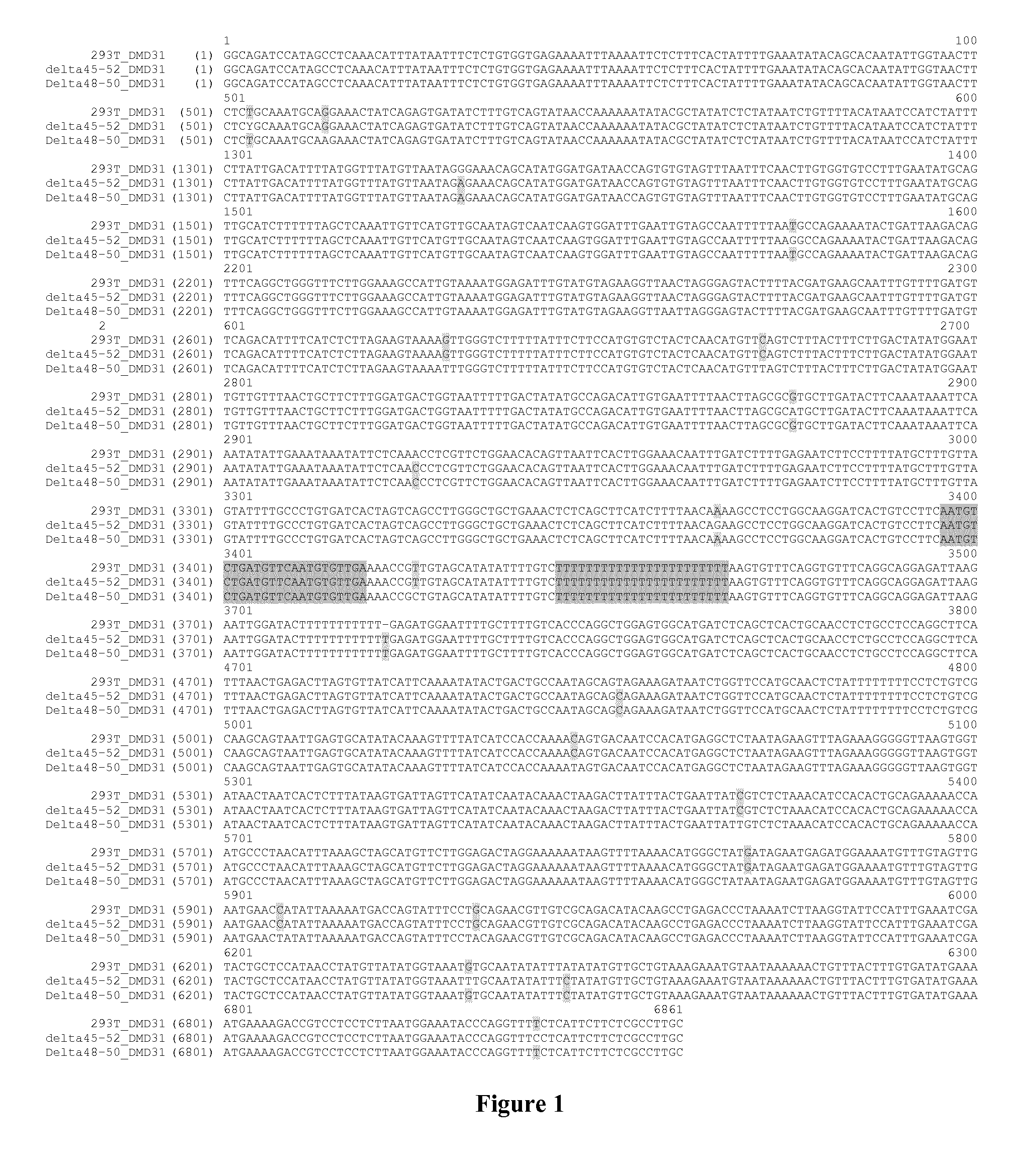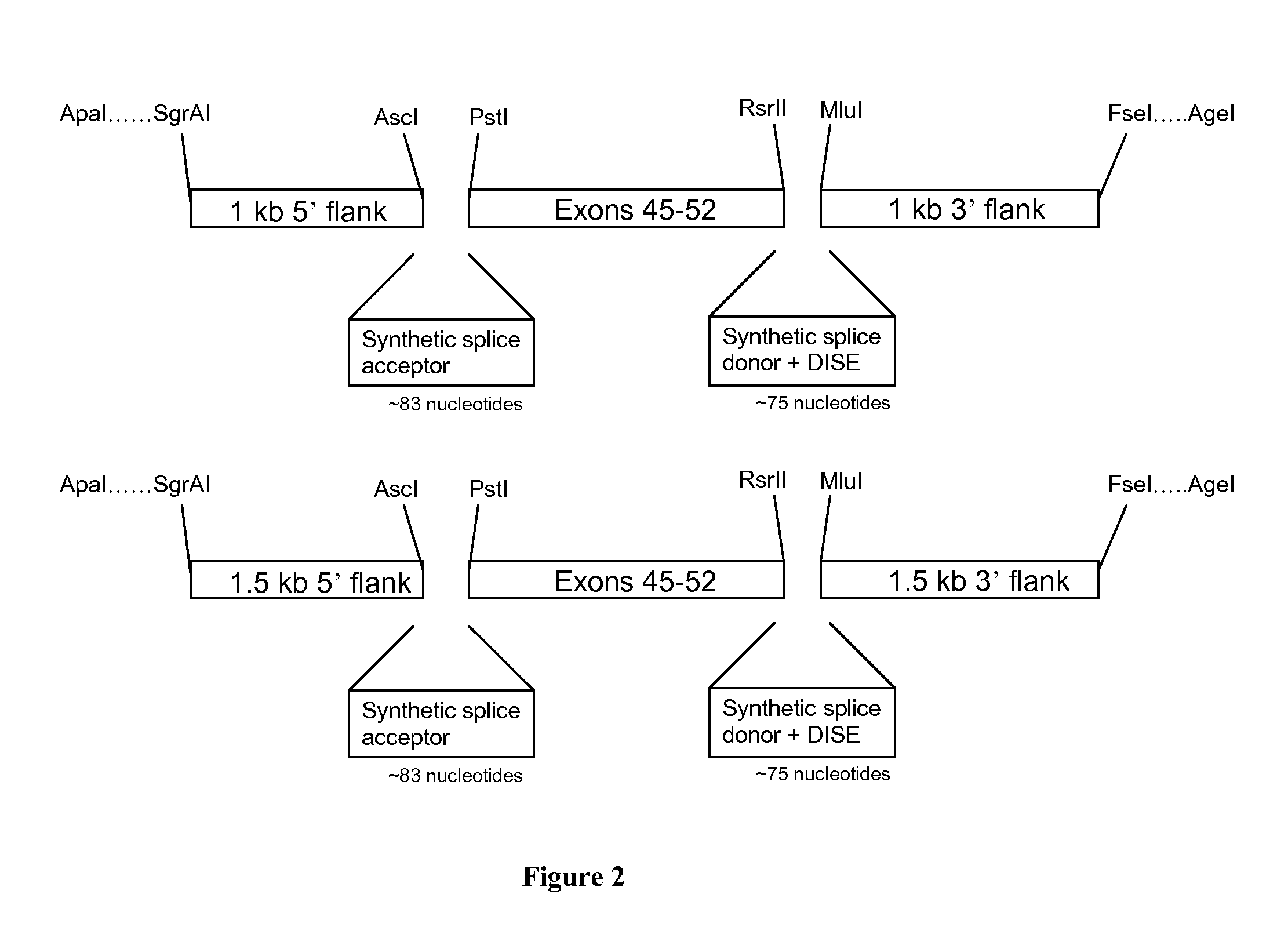Compositions and methods for duchenne muscular dystrophy gene therapy
a duchenne muscular dystrophy and gene therapy technology, applied in the field of compositions and methods for duchenne muscular dystrophy gene therapy, can solve the problem of no gene repair therapy for dmd
- Summary
- Abstract
- Description
- Claims
- Application Information
AI Technical Summary
Benefits of technology
Problems solved by technology
Method used
Image
Examples
examples
[0076]Materials and Methods
[0077]Cells
[0078]Immortalised human DMD myoblasts, carrying a deletion of exons 45-52, have kindly been made available to us through collaboration with the AFM-IdM (Paris). These cells, together with primary human skeletal muscle cells (hSkMCs) (TCS Cellworks, Buckingham, UK), 293T cells, and a second human DMD cell line carrying a deletion of exons 48-50 (from AFM-IdM, Paris) were cultured according to published protocols (Popplewell et al., 2011, Methods Mol Biol 709:153-78; Popplewell et al., 2010, Neuromuscul Disord 20:102-10), and used in experiments as indicated.
[0079]Construction of LV-based MN and Targeting Matrix Plasmids
[0080]A meganuclease (MN-DMD31), derived from I-CreI and engineered as described previously (Smith et al., 2006, Nucl. Acids Res. 34:e149; Grizot et al., 2011, Nucl. Acids Res. 39: 6124-6136; Rousseau et al., 2011, J Gene Med, 13: 522-537; Daboussi et al., 2012, Nucl. Acids Res. epub Mar. 29, 2012), has been designed and developed...
PUM
| Property | Measurement | Unit |
|---|---|---|
| pH | aaaaa | aaaaa |
| length | aaaaa | aaaaa |
| nucleic acid | aaaaa | aaaaa |
Abstract
Description
Claims
Application Information
 Login to View More
Login to View More - R&D
- Intellectual Property
- Life Sciences
- Materials
- Tech Scout
- Unparalleled Data Quality
- Higher Quality Content
- 60% Fewer Hallucinations
Browse by: Latest US Patents, China's latest patents, Technical Efficacy Thesaurus, Application Domain, Technology Topic, Popular Technical Reports.
© 2025 PatSnap. All rights reserved.Legal|Privacy policy|Modern Slavery Act Transparency Statement|Sitemap|About US| Contact US: help@patsnap.com



